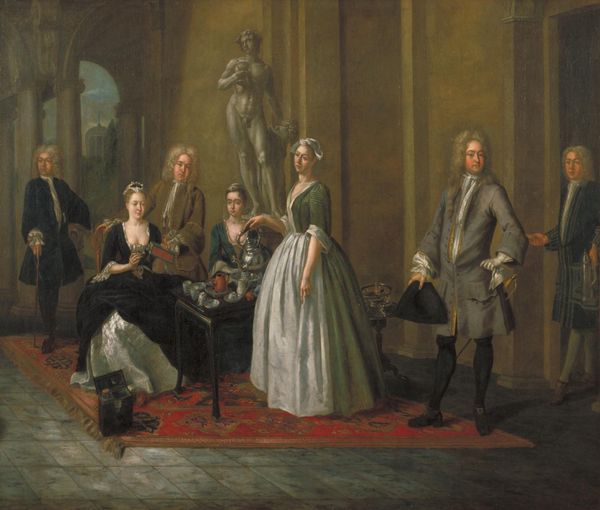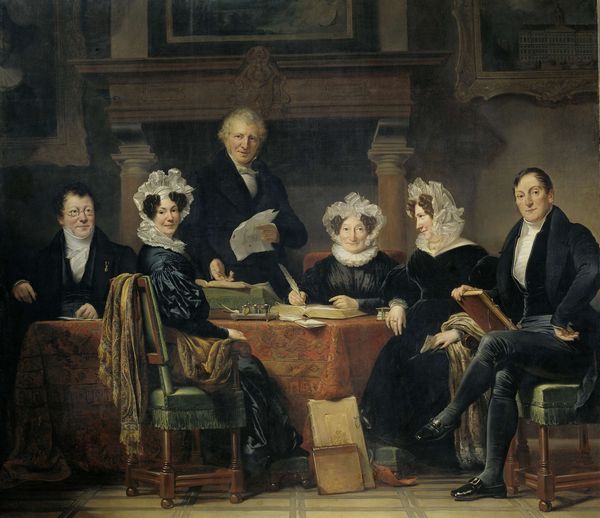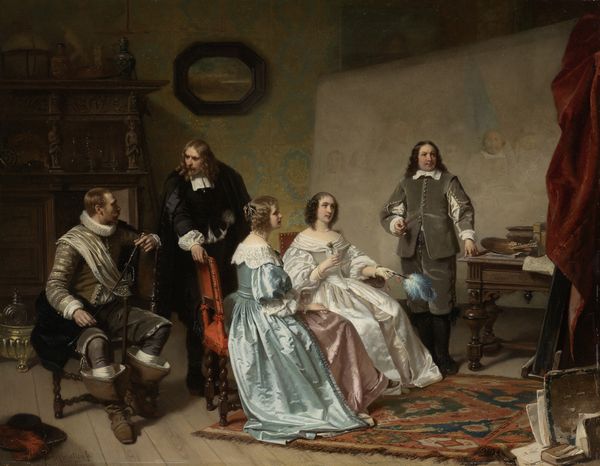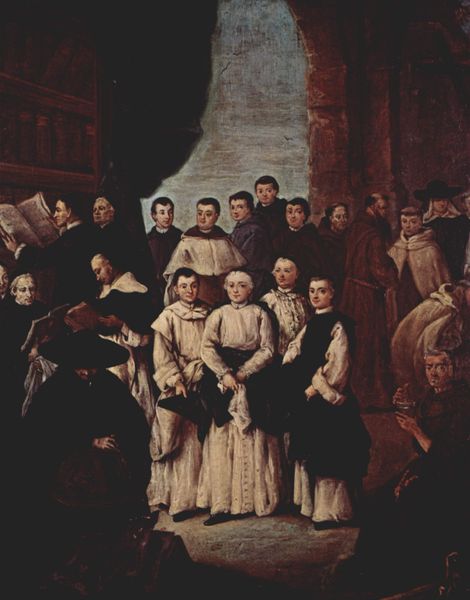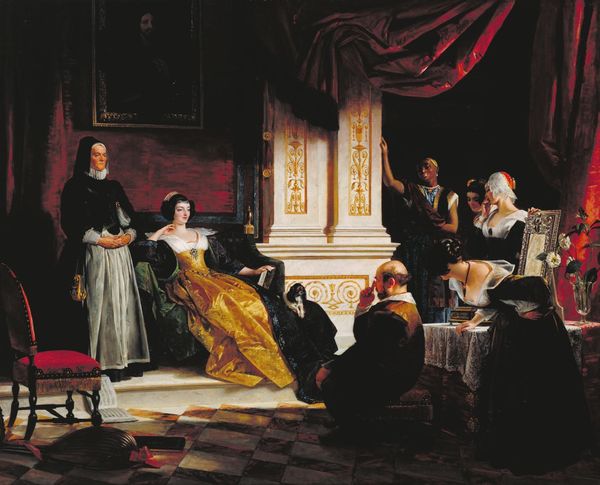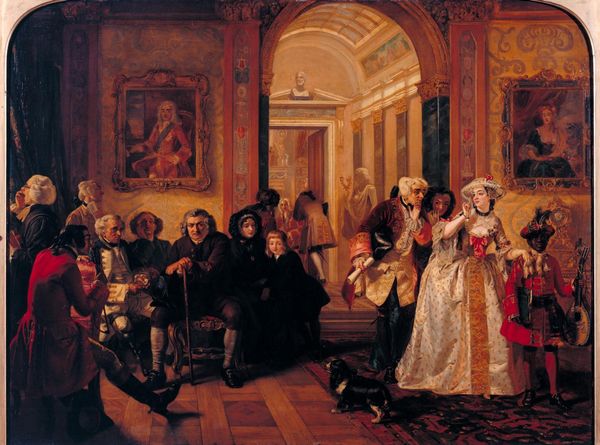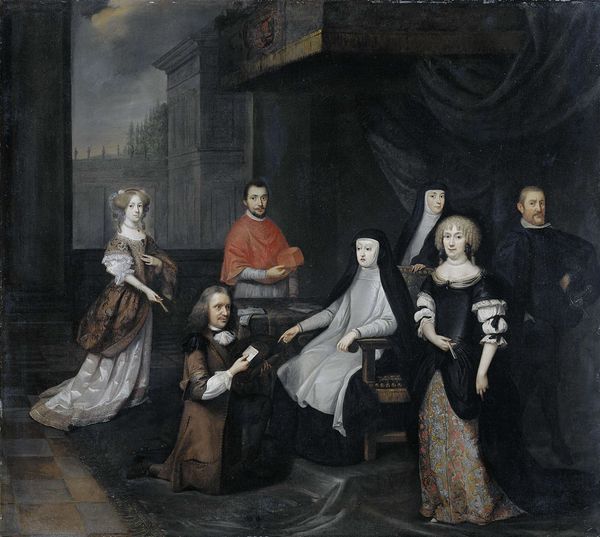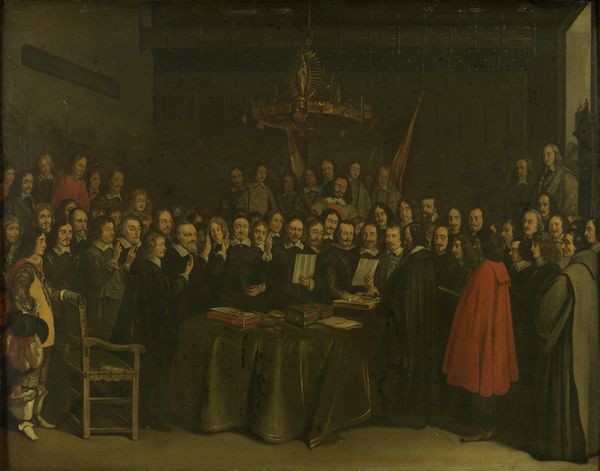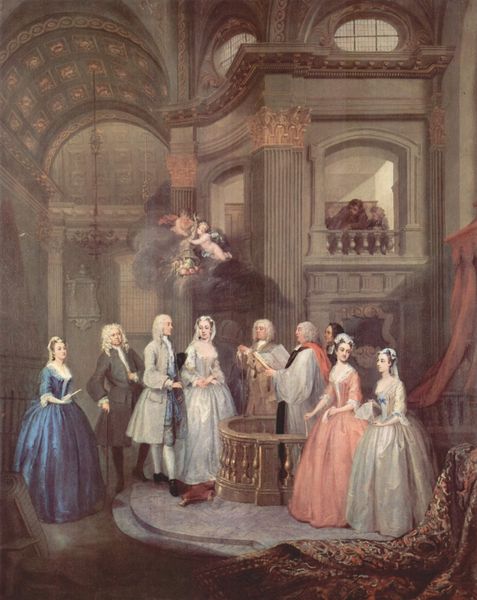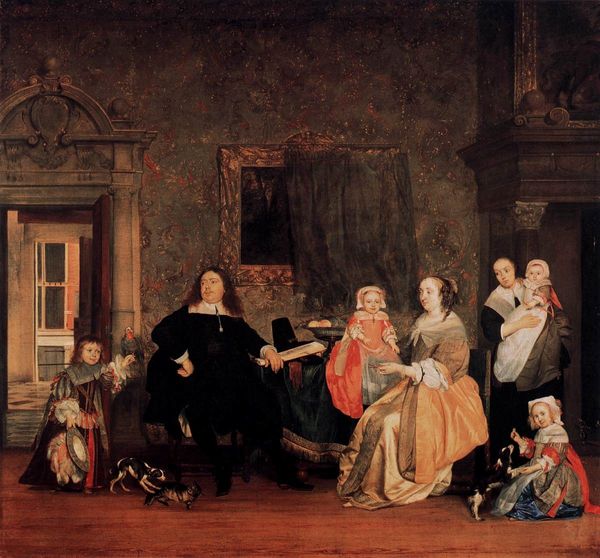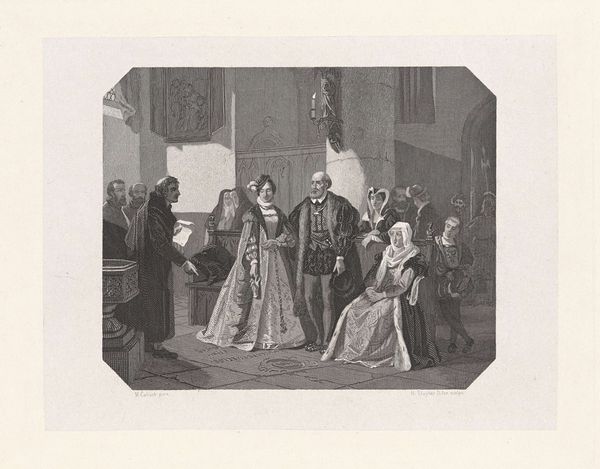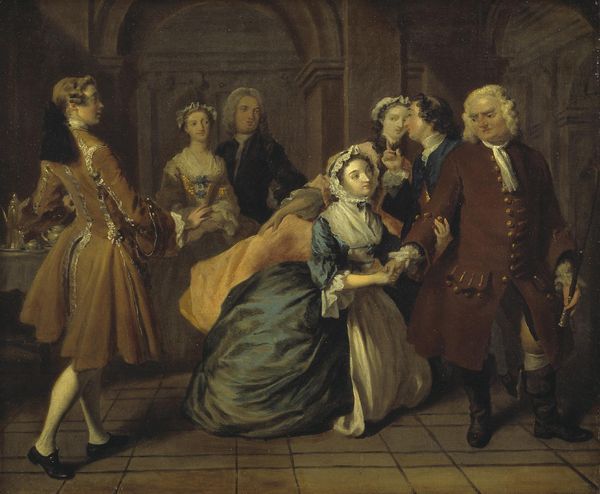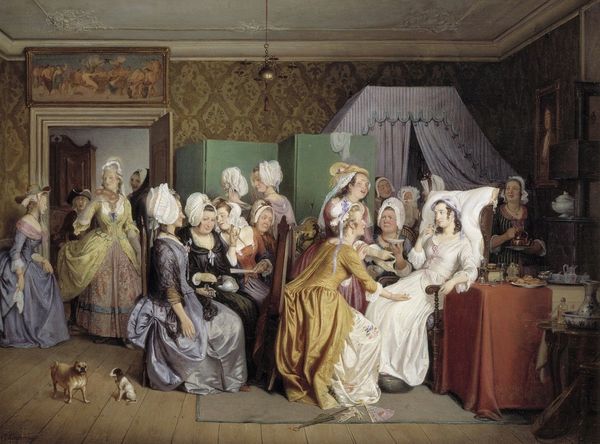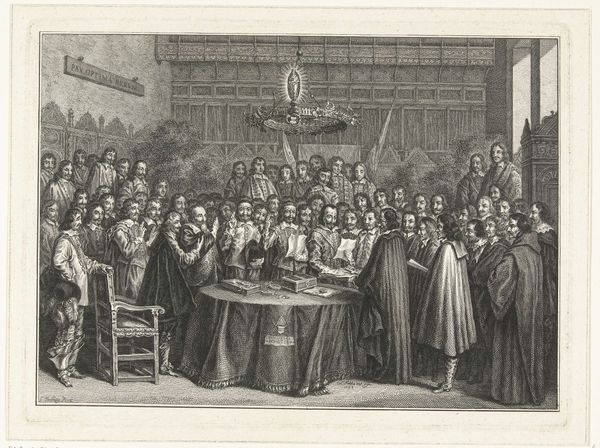
The Princess of Orange Receiving Alexander II (1818-1881), Grand Duke and Heir to the Throne of Russia, in the Czar Peter's House in Zaandam, 17 April 1839 1839 - 1840
0:00
0:00
painting, oil-paint
#
painting
#
oil-paint
#
group-portraits
#
romanticism
#
genre-painting
#
history-painting
Dimensions: height 118.5 cm, width 144.5 cm, thickness 3.2 cm, depth 11 cm
Copyright: Rijks Museum: Open Domain
Editor: This painting, by Christiaan Julius Lodewijk Portman, captures “The Princess of Orange Receiving Alexander II” sometime between 1839 and 1840. The subject matter feels a bit stiff, staged, and certainly celebratory given all the figures present. What does this painting say about the politics of imagery during this period? Curator: Indeed, this staged encounter speaks volumes about the creation of national identity and international relations through art. It commemorates a meeting, attempting to solidify a bond through visual representation. The act of the Princess offering refreshment isn't just hospitable, it's performative. Consider the political context: this painting wasn't just for aesthetic pleasure; it served as a carefully constructed narrative, projecting an image of harmony and connection between the Netherlands and Russia. Who do you think commissioned this work? Editor: Presumably, someone connected to the Dutch Royal Family, using it to promote a particular image. But does the style, labelled as Romanticism, have something to say about it? Is it trying to gloss over the less romantic, pragmatic relationships involved in politics? Curator: Precisely. Romanticism here isn’t about emotional rapture, but about idealizing history. This work strategically downplays tensions and emphasizes perceived commonalities, aligning the two powers. The setting, Czar Peter’s house, is significant: it invokes history, specifically a connection to Russia’s imperial past, in Dutch territory. This imagery serves to legitimize both the Russian heir and the Dutch monarchy by placing them within a historical narrative. Notice anything specific about the figures on display and who is seemingly absent? Editor: There's a definite focus on the elites, reinforcing class hierarchies of the time. Everyone has their role, it appears, but there's not much spontaneity in this encounter. I see what you mean; the painting is less about personal relationships, more about creating a political spectacle to legitimize power structures. Curator: Exactly. The piece functions as a piece of historical documentation and as propaganda, intended to cultivate public opinion and shape the perception of these royal figures and their nations. Editor: Thanks. I now recognize the painting's deliberate construction of political messaging. Curator: And understanding that allows us to dissect similar imagery we still encounter today.
Comments
No comments
Be the first to comment and join the conversation on the ultimate creative platform.
